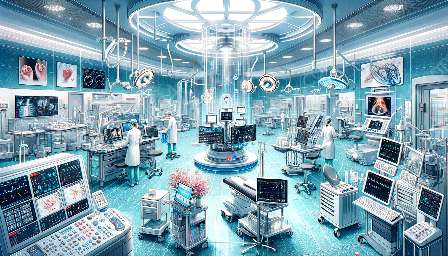The field of musculoskeletal biomechanics and medical device design delves into the intricate interplay between the mechanics of the human body and the development of innovative medical technologies. Whether it's designing implants, orthoses, prostheses, or other assistive devices, understanding biomechanics is crucial. Let's explore the fascinating world where biomechanics and medical devices unite to improve healthcare and quality of life.
Musculoskeletal Biomechanics: Understanding the Body's Mechanics
Musculoskeletal biomechanics is the study of the mechanical aspects of the musculoskeletal system, which includes bones, muscles, tendons, ligaments, and joints. It involves analyzing how these structures interact to produce movement and support the body. Researchers and engineers in this field seek to understand the forces acting on the body and how it responds, as well as the mechanical properties of musculoskeletal tissues and their functions.
Key Areas of Focus in Musculoskeletal Biomechanics
1. Biomechanical Analysis: Researchers use various techniques, such as motion capture and force sensing, to analyze the mechanical behavior of the musculoskeletal system during activities like walking, running, and lifting. This can provide invaluable insights into injury prevention, rehabilitation, and performance enhancement.
2. Tissue Mechanics: Understanding the mechanical properties of bone, cartilage, and soft tissues like tendons and ligaments is essential for designing medical devices that interact seamlessly with the body's own structures. It also plays a crucial role in developing treatments for musculoskeletal conditions.
3. Joint Biomechanics: Detailed knowledge of how joints move and distribute forces is vital for designing prosthetic joints, implants, and braces that mimic natural movement and maintain long-term functionality.
Medical Device Design: Bridging Biomechanics with Technological Innovation
Medical device design intersects with musculoskeletal biomechanics in numerous ways, as engineers and researchers draw on biomechanical principles to develop devices that alleviate pain, restore function, and improve patients' lives.
Applications of Biomechanics in Medical Device Design
1. Prosthesis and Orthotics: Biomechanical research informs the design of prosthetic limbs and orthopedic devices to ensure optimal fit, function, and comfort for the user. This may involve using materials that mimic the mechanical properties of natural tissues and incorporating technologies to enhance biomechanical performance.
2. Implantable Devices: From artificial joints to spinal implants, the design and testing of implantable medical devices heavily rely on an understanding of musculoskeletal biomechanics. Engineers must consider factors such as load-bearing capacity, stress distribution, and long-term stability within the body.
3. Rehabilitation and Assistive Devices: Biomechanical knowledge guides the development of rehabilitation equipment and assistive devices, helping patients regain mobility, strength, and independence following injuries or surgeries.
Challenges and Innovations in the Field
Despite the progress in musculoskeletal biomechanics and medical device design, significant challenges persist. One major challenge is the need for personalized solutions that account for individual variations in anatomy and biomechanics. This necessitates the integration of advanced imaging, modeling, and manufacturing technologies to create custom devices tailored to each patient's unique needs.
Future Prospects and Research Directions
The future holds promising opportunities for further advancements in musculoskeletal biomechanics and medical device design. Integrating advanced materials, such as smart polymers and biocompatible composites, with biomechanical insights can lead to more durable, efficient, and biologically compatible devices.
Additionally, the convergence of biomechanics with cutting-edge fields like 3D printing, nanotechnology, and wearable technologies is poised to revolutionize the development of next-generation medical devices.
Conclusion
The synergy between musculoskeletal biomechanics and medical device design epitomizes the marriage of human biomechanics with technological innovation. By understanding the intricate workings of the musculoskeletal system and harnessing this knowledge to create advanced medical devices, researchers and engineers continue to push the boundaries of healthcare, offering hope to countless individuals in need of improved mobility, comfort, and quality of life.


